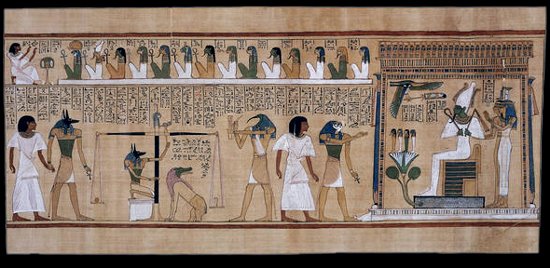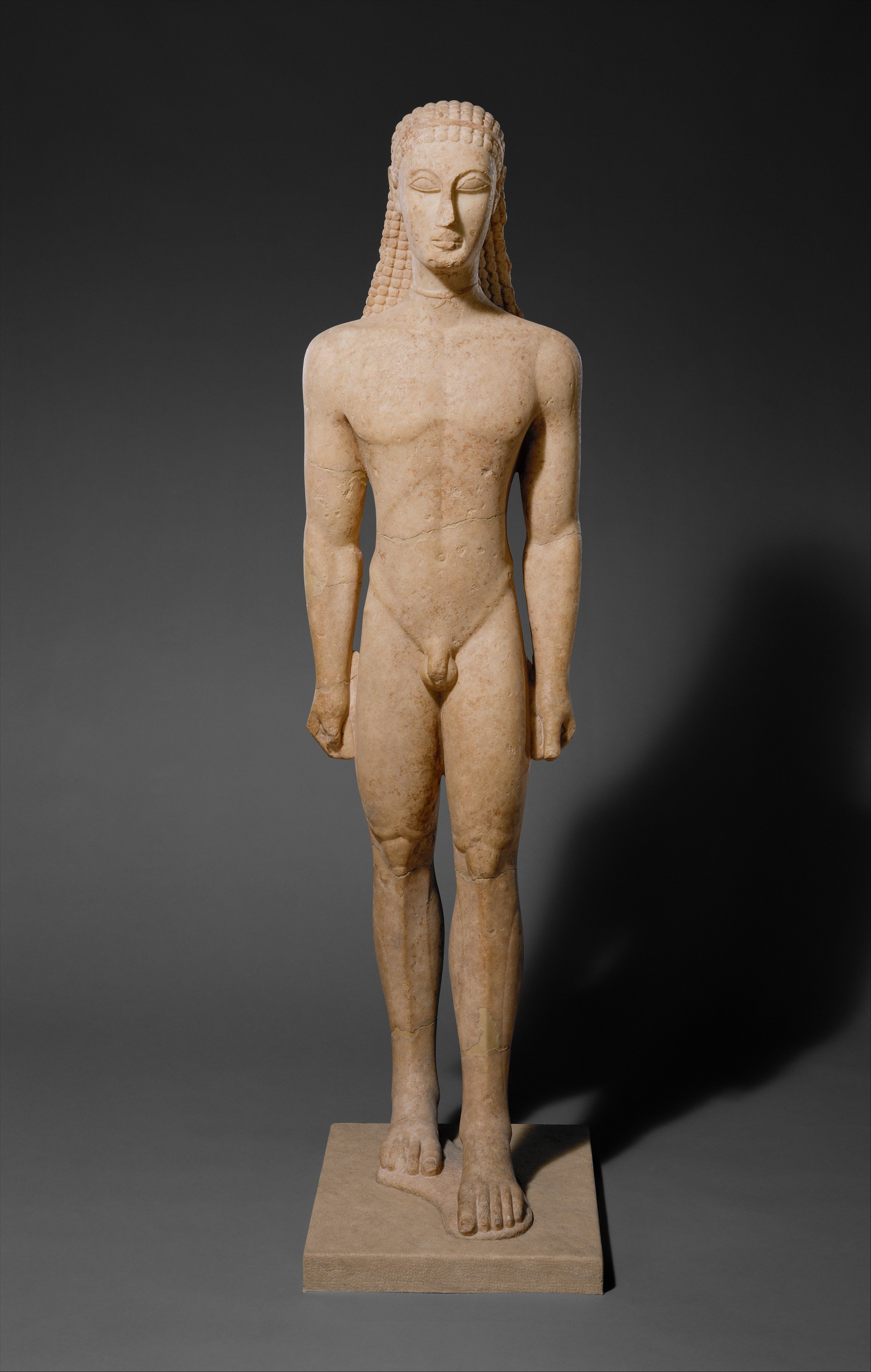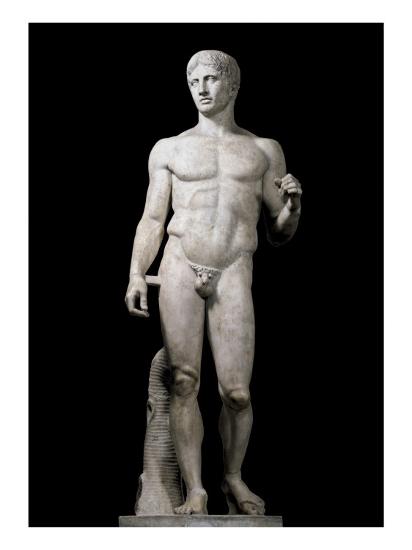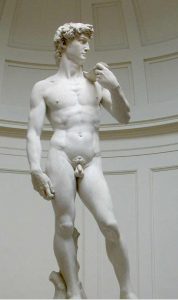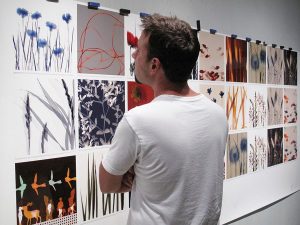I have posted my final 2 weeks ago, but I have made this post if you’d like to see it as a google docs.
Author: Ashley Guerrero
Final Project
Final Project- Creative Project
For my creative project, I have decided to make a piece inspired by the abstract expressionist artist, Jackson Pollock. Jackson Pollock was known for his drip paint style pieces that at first glance may just seem like random splatter on canvas, but in reality, these pieces were so much more. The movement was a direct result of the Post-World War 2 world where the world was somehow even more unstable than before.According to the Museum of Modern art, the abstract expressionist movement was born in the 1950s when “the spirit of optimism had morphed into a potent mix of power and paranoia,” this due to the Cold War and fear of communism spread by the McCarthy hearings (Abstract Expressionism, Museum of Modern Art). Like I stated before, these paintings are so much more because they belong to a movement in which there is a “direct relation to the artist’s emotions, expression, and mood, and showcased their feeling behind the pieces they designed” (Jackson Pollock and his Paintings, Jackson-pollock.org). This personal connection to the painting also allowed for artists to be non- objective and explore new unorthodox techniques to fulfill their emotional needs rather than to make a painting with a specific audience (other than themselves) in mind. Along with the emotional connections formed by the artist and their canvas, there are also technical aspects that make a painting an abstract expressionism piece such as “physical engagement with his materials welcomed gravity, velocity, and improvisation into the artistic process,” ensuring the current feelings of the artist are correctly translated into the canvas (Jackson Pollock, Museum of Modern Art).

My creative Project
At first, while researching Jackson Pollock and abstract expressionism I believed that creating my painting would be easy and effortless, but I was wrong. Many factors went into creating a piece that I was satisfied with including materials, colors, color combination, texture, and the use of negative space. In the beginning, I had to choose between using paint, nail polish, oil pastels, or crayons, and finally chose crayon. I had chosen Crayon because abstract expressionism artists used unconventional materials, Pollock using house paint, and I had believed that crayons and a blow dryer were unconventional materials. The use of crayon in my piece would also add some texture to it. After choosing crayons, I tested how melting crayon would react on paper and to my surprise, they actually did go together. I also learned to create the piece I wanted to create I had to control the crayon’s splatter as much as possible by positioning the crayon and blow dryer at a perfect angle and distance from the paper. On my first version, I melted the crayons one by one but it proved ineffective as the melting the crayon would also start to melt the already dried wax on the paper. On my second try, I chose a different color from the first failed piece of yellow, dandelion, orange, and green to pink, orange, and red. My second piece (first successful piece) was completed, but I was unsatisfied with the end result and the abundance of white negative space. My third and present version was like its second version, completely different from its predecessor, the paper was now painted completely in a darker and grayer Blue, the crayon colors where now black, dark purple, white, and gray, and the direction the crayons were melted was in a clockwise direction instead of diagonally towards the top left corner. My third version was my best one because I was able to add more elements that made the piece more well-rounded as well as staying true to the origins of the abstract expressionist and Jackson Pollock painting by connecting with my canvas and capture my state of mind and feeling (mostly fear and anxiety) into the piece.
Works cited
“Abstract Expressionism”, Museum of Modern Art, https://www.moma.org/learn/moma_learning/themes/abstract-expressionism/
“Jackson Pollock and his Paintings”, Jackson Pollock
Biography, Paintings, and Quotes, https://www.jackson-pollock.org/
“Jackson Pollock”, Museum of Modern Art, https://www.moma.org/artists/4675
“Abstract Expressionism”, The Metropolitan Museum of Art, https://www.metmuseum.org/toah/hd/abex/hd_abex.htm
“Abstract Expressionism”, The Art Story Modern Art Insight, https://www.theartstory.org/movement-abstract-expressionism.htm
Met visit: The Renaissance vs. Baroque
The Renaissance began approximately in the 14 century in Florence, Italy. The era ushered in a period in which Artists rediscovered Greek and Roman technology and incorporated the concept of humanism to their pieces. This era included famous pieces such as David, The Last Supper, The Sistin Chapel, Gatamelatta, and The School of Athens whose qualities distinguished them from the darker and less realistic art of the medieval ages. The Boroque period began in the early 17 century and lasted until the mid 18 century. This period succeed the Renaissance, and like the Renaissance it had specific and unique characteristics that made more interesting and different from other art periods. While visiting the European art exhibit at the Met, I was able to compare art pieces from both the Renaissance and the Baroque. From the Renaissance period I was intrigued by Andrea Solario’s Salome with the Head of Saint John the Baptist, and from the Baroque period I was also intrigued by Eustache Le Sueur‘s The Rape of Tamar. Comparing and contrasting both of these clear and beautiful pieces made it easier to identify the distinguishable qualities of the these pieces respective periods. For example, despite the subject matter in the Renaissance painting and the depiction of a severed head, the Rape of Tamar seems to be more dramatized and successful in capturing not just a moment but the emotions that each person in that moment might feel. Another difference between both paintings is that although Salome with the Head of Saint John the Baptist and the Rape of Tamar are capturing a specific moment, the Rape of Tamar actually feels like a snapshot of the moment as demonstrated by the mid-action depictions. Finally, another main difference is the use of diagonals in The Rape of Tamar, every single person portrayed in the painting is at positioned diagonally as well as their view. This use of diagonal allows for the artist capture a more realistic portrayal of events.
The Rape of Tamar

Salome with the Head of Saint John the Baptist.

Blog #8: Humanism in Greek Art and Roman Art
| In your own words define humanism. What is it? And how does the Art of Greece and Rome illustrate it when compared with Mesopotamian or Egyptian Art. Use an example of Greek or Roman art and compare/contrast it with an example of Mesopotamian or Egyptian Art. |
Humanism is the interest in the human body and anything regarding Mankind. Humanism also strays away from religious beliefs and figures being at the center of the universe to now Mankind and their interest. While both Greek and Roman civilizations hold a strong bond with their Gods and mythology, through their art they continuously explore human anatomy and even incorporating humanism into the depiction of their Gods.
Despite the Greek civilization creating art during the same periods of Ancient Egypt and Mesopotamia, both groups could not be any more different in terms of their subject and art style. While the Greeks experienced four periods of art, each one progressively more realistic and complex than last, they all focused on the human body and how it moves, the Egyptians maintained a consistent art style for the thousand years of their existence where only royalty and the Gods were the subjects and the Gods depiction were more detailed. For example, in the “Last Judgement of Hunefer,” the Egyptians depict the process a dead individual faces to join the afterlife and despite the piece focusing on Hunefer the piece attracts the viewer to intricate details given to the Gods and the way their depicted as more not simply a human but a hybrid of the best characteristics found in creatures roaming the earth. In the Greek pieces, “Korus” and “Doryphoros” both subjects are men and both pieces focus on the appearance of a young, healthy, and strong body. Both pieces from different periods, archaic and classical respectively, demonstrate not just progress in art styles but the progress of artist understanding how the body moves, and, mastering the portions of the human body to create a realistic depiction of mankind. In, “Hermes and the Infant Dionysus”, the artist depicts the Gods as almost humanlike and the artist even creates a more realistic depiction of a human body than the last two pieces by perfecting the proportions of the body and carving a more slimmer and trim body that through the right amount of effort can be achievable.
In Conclusion, it is apparent that despite both civilization existing during the same time period and only separated by a relatively small body of water, their art is completely different. Their art is not only completely different because of non- existent change in styles In Egyptian art and the constant progress of Greek art, but they also differ in the way they approach art as Egyptians never cared to change because to them the style was already perfect enough to distinguish people, royalty, and Gods, and, the Greeks became more interested in analyzing the human body and its limitations which ultimately led to constant progress of the art. The element of humanism is ultimately the difference and because of it, art pieces gain much more depth as they are not a simple piece depicting an individual but a piece focusing mankind as a whole.
http://deity-divinity.blogspot.com/2006/07/judgement-of-hunefer-before-osiris.html
https://www.metmuseum.org/art/collection/search/253370
https://www.art.co.uk/products/p9634407729-sa-i5503170/doryphoros.htm
https://en.wikipedia.org/wiki/Hermes_and_the_Infant_Dionysus
Blog Post 7: Brooklyn Museum- Soul of a Nation Exhibit
Brooklyn Museum Assignment- Part 2: Choose a work from Soul of a Nation that spoke to you. Why did you choose this? How does it relate to the rest of the exhibition? Use formal analysis to talk about the work and why you chose it.
In the Soul of a Nation Exhibit, the piece that most spoke to me was Freedom Now by Reginald Gammond. The painting is average sized and like most pieces in the exhibit, it was in shades of black and white, but what interested me the most is that it captured a very important moment in African- American history: The civil rights movement, which was at its peak when the Reginald decided to create his piece, 1963. The painting was completed in black and white which I believe is trying to convey the message of how civil rights is a black and white issue in that you are either for civil rights or you’re against it. In the painting, there is an illusion of a large group that is part of a larger protest and they all seem to direct their eyes are directed toward the viewer. The eye to eye contact between the viewer and the individuals in the painting allows for the artist to send a message that everybody is required to chose a side, either go out in the streets and protest the injustices against the African-American community or stay at home and allow for the injustice to go on. The piece also shows cut-off signs but makes sure to show the faces clearly which I believe Gammond did so intentionally to humanize the movement to an audience that probably was never sympathetic to the movement. Despite seeming like just a black and white painting capturing a moment during a protest, upon further analyzing it becomes clear that Gammond created a piece that empowers the viewer to support the civil rights movement and understand that a movement is not just a message but the people behind it willing to do anything to make sure that injustice is no more.
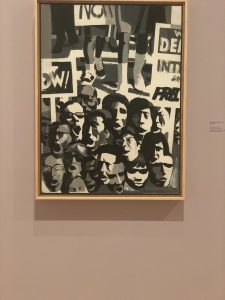
Blog 6: Brooklyn Museum- Ancient World
Brooklyn Museum Assignment: Part 1: Choose one artwork from the ancient world (your choice, but the BK Museum has a good selection of Mesopotamian and Egyptian art), use formal analysis to talk about the work and relate it to some of the concepts we have discussed in class.
In the Ancient Egyptian Art exhibit in the Brooklyn Museum, I encountered a small sculpture depicting a Queen and her child how had recently become king. According to the Brooklyn Museum, the Sculpture was from Upper Egypt circa 2228-2224/2194 B.C.E, its measurements were 39.2*24.9cm, and it was made from Egyptian Alabaster giving the sculpture an orangey-white color. In the sculpture, there were two subjects: Queen Ankhnes-Meryre the second and her son, Pepy the second, who sat on her lap. The sculpture also had written down the name of each in hieroglyphics below them. The Queen was significantly larger than her son which indicates she is older and has an authority over not just her child but the King. Despite Pepy the second being a child of approximately six years old, he is not depicted as such in fact he appears to look like a small healthy young man fit to be a king, most likely depicted this way so that subordinates wouldn’t question the legitimacy of his reign. The artist also goes out of his to make it clear that both subjects are royalty when instead of King Pepy having his legs hangs like most kids, they’re actually placed upon a step to symbolize his importance and power. It is clear that the artist when out of his way to ensure that the Queen’s and new ruler’s image of power was not hindered due to pepy the second’ss young age, but they also made it clear that The Queen still hold a bit more power over Peppy due to her experience.
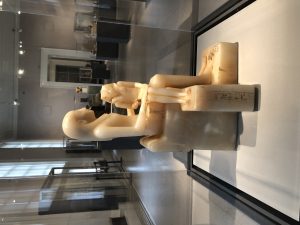


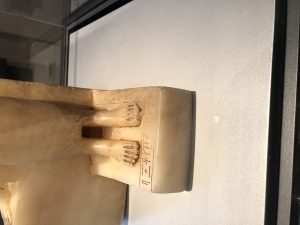
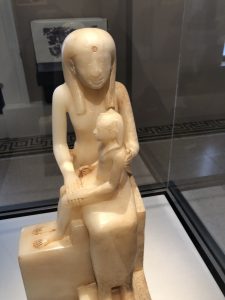
Unit 1 Summary
Unit 1 Summary–Tell me what you learned as we worked through Unit 1 (formal analysis and critical pedagogy). The ideal summary will put two or three concepts, ideas, or quotes from the reading in dialogue with each other. This is your opportunity to show me that you have learned something, and to tell me what that is and why it matters to you.
In Unit 1 we learned about the critical pedagogy through Pablo Freire’s Banking model and we learned how to utilize formal analysis when encountering art pieces. Pablo Freire’s banking model is a criticism of the current way of teaching. He compares the information given by the teacher to student as a deposit from an individual to the bank. He also adds that the student is asked to retain the information for the sole purpose to spit it back up and not to analyze and study it. Friere’s banking model makes it clear that he advocates for a more interactive form of teaching in which teachers aren’t restricted to a criteria and forced to repeat the same lesson over and over again and for students to be actually voluntarily invested in what they’re learning for the sake of their education and not for some test.
Formal analysis is a perfect technique satisfying Freire’s ideal teaching method when it comes to Art pieces because it allows for an individual to analyze every single element that makes up the piece and to fully interpret the meaning behind it which Anne D’alleva describes it best as she states it is not “simply describing what you see in an artwork” but tackling “what the artist wants to convey visually” (27). Formal analysis looks at four different characteristics within the art piece: color, line, space and mass, and scale, but contextual analysis (looking at a pieces cultural and historical context) may also contribute to an art piece interpretation as Anne D’alleva adds that “it’s hard to separate them out completely. Often, art-historical analysis requires us to do both at the same time” making contextual analysis an unofficial but important characteristic for students to look out for when approaching an artwork (26).
Friere’s banking model is something that I very much believe in and have dealt with my entire school life; In elementary school, I was trained for state exams; In middle school, I was trained for finals and mid-terms; and in High school, I was trained for regents and SATs. Now looking back I vaguely remember what I was taught or the last time I applied what I had learned to my present day-life but with the introduction of formal analysis, I’ve been able to enrich my knowledge of different art pieces I’ve always admired. I from a very young age have always loved to visit museums, especially art museums and I look forward to going to the Met and enriching my self by taking my time to analyze why a canvas is as big as it is; why an artist chooses a certain palette; or why he chooses to use oil painting rather than watercolor. Discovering formal analysis has forever changed the way I view art and it has allowed me to transition from a casual viewer to an academic art student.
Blog Post: My Comment on a Colleague’s Blog Post.
I recent commented on a colleagues well- written blog post on their art story and the similarities in both our post. We bove agree on the how subjective the meaning of “art” could be and the variety of art forms that exist that is not just limited to paintings, sculptures, and photography. I also commented that we only have one differences in our art story which was our favorite art form, theirs being Photography and my being Painting and sculptures. Through their interest I was also able to notice that they seem more interested in modern art. Despite having different interests in different art forms it is not big deal because we are different people with different art stories who happen to agree that “art” has no definite meaning.

Blog Post 4: Formal Analysis

What is formal analysis? In your own words explain what we mean when we say formal analysis and what its components are.
Formal Analysis is an approach to interpret any work of art. Through Formal analysis the audience becomes aware of both visual and physical conditions of the piece. The use of this method helps enhances the audiences understanding of the piece through color, line, space and mass, and scale. When looking at color one must look at the different hues being used and the value (lightness) of the color. One must also interpret lines by noticing how continuos or broken they are, soft or hard, and where they may be directing towards. Analyzing the space created within a painting and the illusion of any weight inside the painting or the actual weight of a sculpture gives a sense of space and mass. It is also essential to analyze the artist use of scale as they may use the element in different ways by using a larger canvas or make a larger sculpture to emphasize the importance of the subject more specifically in cases where the subject may be political figures, gods, portraits of important individuals, or mythical figures. when an artist incorporates all the elements into a piece it creates a composition and well rounded painting/ sculpture. Adding on to the elements of formal analysis, contextual analysis also plays an important role because it may give a historical background to the piece.
Blog Post 3: Pedagogy and Power

What is the banking model to Friere? Who does it empower or disempower, and at whose expense? Do you have any experience with this model? If so, describe an encounter that you have had with the banking model and reflect on it, both positives and negatives.
The banking model is based off what Paulo Friere believes to be the traditional education system, in which the teacher “deposits” information into the students mind to simply memorize to later on spit right back. Freire believes that in this education system students are not truly learning as they are not allowed to actually think. The Banking model ultimately empowers the teachers and those in charge of the curriculum as they have complete power to “deposit” anything into the students brain whether it be fake or actual factual information.
I have had many experiences with this model throughout most of my my life. In elementary school we expected to memorize in preparation for the New York State Exams. In Middle school and High school we were again expected to memorize rather than learn for our regents, mid-terms, and finals. Personally the banking model has had both positive and negative effects in that in my math class memorizing the steps to solve specific problems and repeating them over and over again played an important and effective role in studying for an exam. The down sides to this model is that once the information is not needed the brain seems to depose the information which happens every year once the school year ends.
